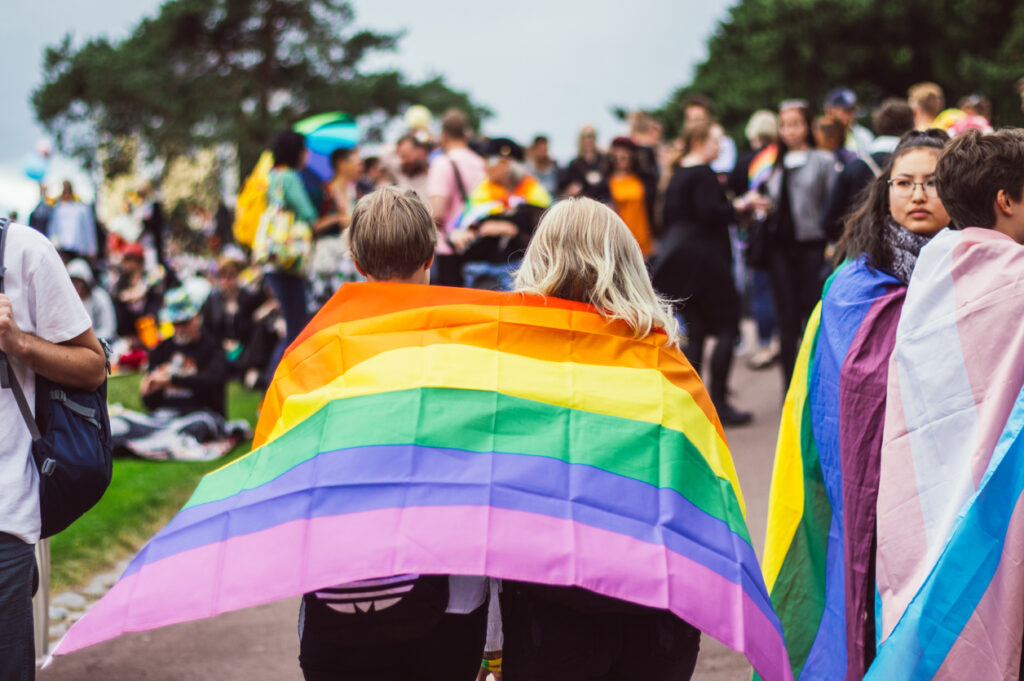Alyson Orcena, LMFT, Melissa Vallas, MD, Shikha Verma, MD, Ellen Bloch, LCSW, Lianne Tendler, LMFT, Megan Johnston, LMFT
Meet the Team >

The list of labels people use to describe their sexual orientation and their gender looks dramatically different than it used to. Surveys on sexual orientation as recent as five years ago included options like gay, lesbian, bisexual, and straight. The acronym LGBTQ, which itself grew from the umbrella term gay, which became GLB, then LGBT, only covers about one-third of the labels that self-described members of the LGBTQ community use to define their sexual orientation and gender identity. The most comprehensive acronym looks something like this: LGGBDTTTIQQAAPP. You can decode that acronym with this LGBTQ glossary.
Most people agree that it’s a good idea to add letters to the acronym in order to highlight the different struggles that people face when living outside of historical gender and sexuality expectations. But anyone who’s studied for a vocabulary test in school knows that memorizing a long, constantly growing list of words can be overwhelming.
So what should we do with all of these labels?
The people to listen to about using LGBTQ labels are LGBTQ people themselves. But within the community, people disagree about how important the different labels are and whether anyone wants to use some of them at all. While you can never go wrong by using the words someone has asked you to use for them, it can be helpful to understand why some people like having lots of labels to choose from and why some people resist using labels altogether. The truth is that labels can be both helpful and hurtful, so we all need to use them carefully.
How Labels Can Help
Imagine you’re at the grocery store to buy ingredients to cook a fancy meal for your birthday. The recipe calls for a can of whole, peeled tomatoes, so you head for that aisle. When you get there, though, you discover that all the labels on the cans just say “tomato.” Imagine you ask a store clerk for help, and they tell you that the cans hold all kinds of tomato products – tomato sauce, diced tomatoes, tomato paste, and yes, whole tomatoes. But the clerk doesn’t know any more than you do about which cans contain which kind of tomatoes. You’re either going to have to buy lots of cans and hope one of them has the tomatoes you want, or find a different recipe for your birthday meal.
Feel frustrated?
That’s how it can feel for teens when they try to connect with people who have similar experiences around their gender or sexual identity. While talking with any member of the LGBTQ community might feel more satisfying than talking to a group of non-LGBTQ people, the various experiences different groups within the community have makes it important to identify people who see themselves as part of one of those more specific groups.
Simply put, labels help us find the people we want to connect with. For some LGBTQ teens, finding people as much like them as possible is an important part of understanding their own sexuality or gender. That’s why some LGBTQ people favor having as many labels as necessary to describe different groupings of traits and experiences.
When Labels Become Weapons
While labels can help build community and encourage self-expression, they can also be used to exclude people and limit their growth. Some people who use a label think of it as a word that people must earn the right to use by meeting certain criteria, and that they get to decide whether someone else has earned that right. In the same way someone who’s been a fan of a movie for decades might dismiss a newer fan, teens might encounter someone who says they aren’t allowed to use a label unless they change things about how they look or act. This kind of label or identity policing happens within the LGBTQ community.
It can be devastating to adults and teens alike.
Labels can also be harmful when they are forced on someone who doesn’t want them. One of the teens interviewed for this article talks about how her friend encouraged her to describe herself as bisexual to the point that it felt like bullying. Despite the increase in social acceptance of LGBTQ people around the world, coming out it still scary and hard for anyone at any age. Being labeled by other people, even if the label fits, takes away teens’ right to say for themselves how they understand their gender and sexual identities when they’re ready to say it.
How to Use Labels in Ways That Don’t Hurt

Choosing labels for themselves is a powerful way for teens to say who they are and start the process of finding support and community from people like them. But being labeled in ways they don’t want to be, or being doubted when they express a desire to use different labels than they used to, can heap hurt and frustration on top of a teen who might already be struggling to find their place in the world.
A good approach to navigating the long list of LGBTQ labels is to familiarize yourself with them using the glossary in the link in the beginning of this article. Encourage your teen to take all the time they need to decide whether and how they want to label themselves. Support your teen if they change their mind. Assure them they have the right to decide what labels apply to them, not anyone else, and that their gender and sexual identities are valid regardless of the attitudes that others express. There are more ways to describe themselves available to teens than ever before.
It’s up to them – and one else – to decide how they want to use them.






























































